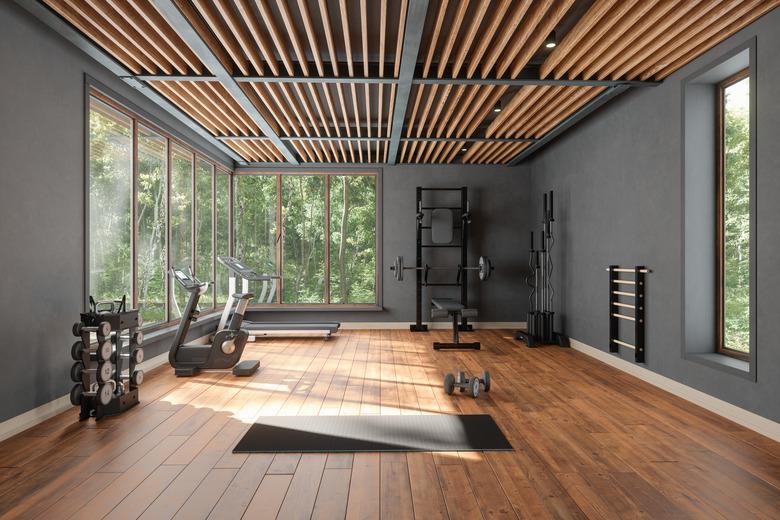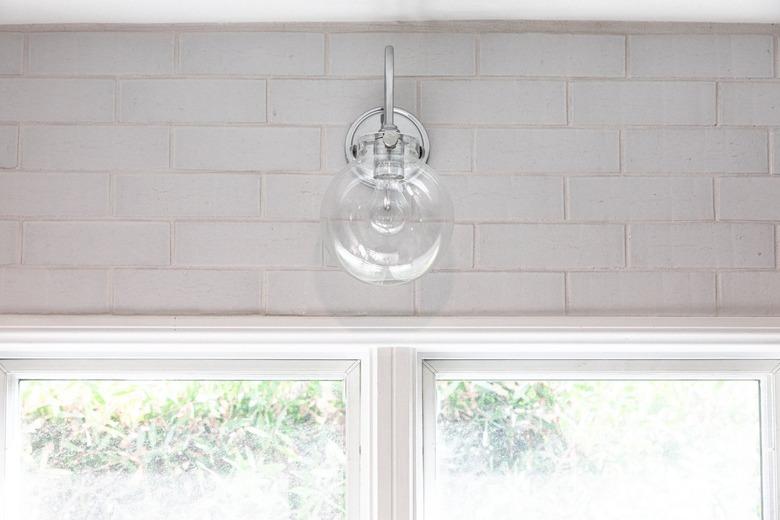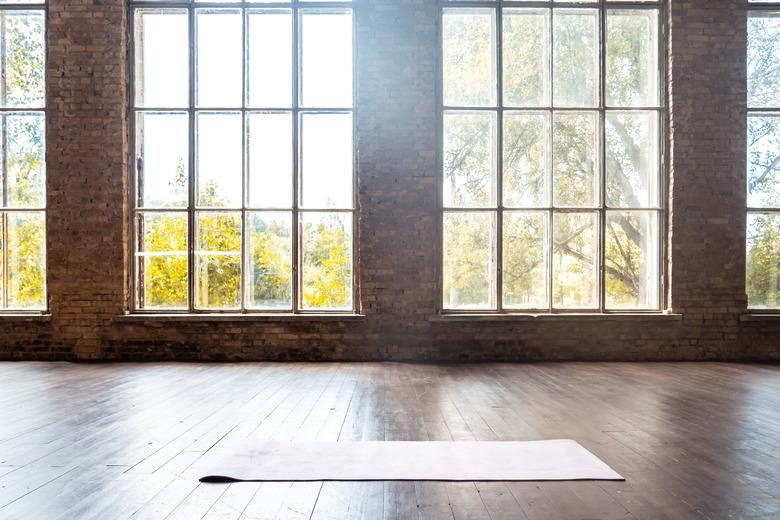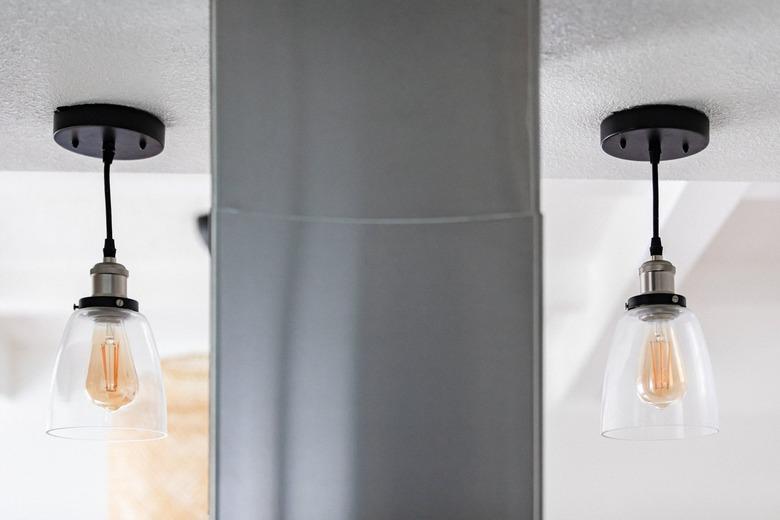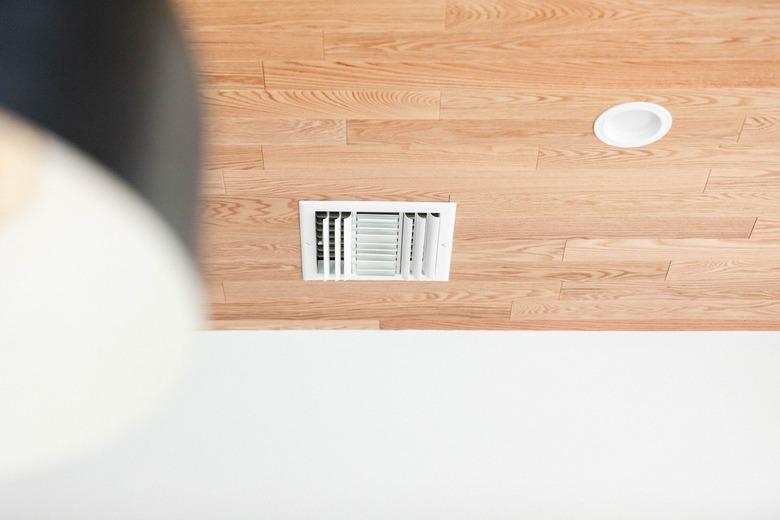How To Design Home Gym Lighting Without Breaking A Sweat
Effective home gym lighting can transform your workout space into a high-performance fitness studio. For safety and function, you need to be able to see what you're doing while you're working out. Plus, thoughtful design of your home gym lighting can be motivating, encouraging you to stick it out for one more set.
Making a lighting plan is easy with some knowledge, whether you're still searching for the perfect home gym ideas or upgrading an existing gym in your basement, garage, or spare room.
Keep Safety in Mind
One thing is for sure — you won't be sitting idle in your home gym. Jumping, lifting, and exercising means you'll likely need all of the overhead space that's available to you. Ceiling lights are excellent for lighting up any room, including your gym, but consider the ceiling height and the size of the light fixtures before installing them in your gym space. For ceilings less than 8 feet tall, you may consider installing wall lighting or other options instead of overhead fixtures so that you can take advantage of the workout space available to you. Whatever the case, be sure to keep safety at the forefront while designing.
Understand the Importance of Lighting
The next consideration when designing your home gym lighting is the importance of proper illumination. Our brains and bodies react differently to various lighting situations. A room softly illuminated by candles can create an air of peaceful relaxation or romance, while darkness may cause a sensation of sleepiness. On the other hand, bright lights or sunshine can be energizing and perfect for a home gym. Lighting your workout space is more than just illuminating your gym equipment. Lighting is a tool you can use to make your workouts more productive.
Use (or Mimic) Natural Lighting
Natural light is the best option for illuminating your home gym. If you're still deciding which room would work best for your home gym, consider placing it in a room with large windows, skylights, or both. A popular option for homeowners is to turn an unused attic into a livable space with a home gym, which is perfect for adding natural light through one or more skylights.
However, for many people, getting natural light to a workout space is often easier said than done. Budgets and home layouts often limit the amount of sunlight available. If allowing sunshine into your fitness space isn't an option, look for lighting choices that mimic the color of sunshine as closely as possible. Choose light sources that produce a cool light temperature of between 4,000 and 6,000 Kelvin (K) to best mimic sunshine.
The amount of brightness you desire can vary depending on the size of the room, the type of equipment you use, and whether or not you have a virtual screen-based smart gym system. For most home gyms, plan on installing around 400 to 500 lumens of brightness per 10 square feet. As an example, a 9-watt LED light bulb produces about 800 lumens of light, enough for an area of 20 square feet.
Choose Light Fixtures for Your Home Gym
Workout rooms were once limited to just a few lighting options. Today's LED technology provides nearly endless home gym lighting options. The best lighting fixtures for your gym depend on the light you need, your design tastes, and your safety. These are the best types of fixtures for your home gym.
Recessed Lights
Overhead lighting is the most common type and provides the best light spread with the fewest number of fixtures. Recessed lights, or can lights, install directly into the ceiling between the joists or rafters. They provide good lighting that's safe for a gym because they tuck into the ceiling away from exercising hands and feet. Recessed lights are your go-to option if your budget allows room for running electrical wires and a little remodeling.
Track lighting is another overhead lighting option with excellent advantages for a home gym. Bonus — installation is easy to DIY. First, you can aim track lighting exactly where you need it. That means your lighting won't have to change if you change gym equipment or your routine. Second, track lighting can install into existing ceiling electrical boxes, which could save some cash over recessed lights.
Tip
Remember that track lighting will extend down from the ceiling and may need to be well out of the way of your workout if the ceiling is low.
Shop lights (like the old fluorescent fixtures) fitted with LED bulbs or dedicated LED shop lights are an excellent choice for garage or basement home gyms. Most simply plug into an existing outlet and can be connected together to provide the perfect solution for an otherwise dark space.
For spaces where adding an electrical circuit or more light fixtures proves difficult or doesn't fit the budget, several LED light bulb replacements are available that simply screw into an existing bare-bulb fixture and provide considerably more light than a single bulb. Some also have adjustable panels for directing the light to key areas.
If you have limited space for overhead lighting or if you're going for a one-of-a-kind look, there are numerous types and styles of wall lighting in the form of sconces or LED strip lights to add primary lighting or wall-accent, layered lighting. LED accent lighting's only restriction is your imagination. You can even add string lights and color-changing bulbs for personal flair. For the ultimate in gym lighting design or to complement your smart home gym, smart lighting provides a wide range of custom options.
Space Your Lights
Finally, decide how many lights your home gym needs. Proper spacing between light sources will maximize the amount of light in the gym and your lighting budget. If your home gym covers 100 square feet, it'll require about 4500 lumens. That's a lot of light, and a single source that produces that much would cause heavy shadows and be too bright, considering that a 60-watt bulb only offers about 800 lumens.
If possible, spread the light around using several light sources instead of just one or two. An excellent rule of thumb is to divide the ceiling height by two and space individual fixtures apart and away from the wall by that many feet. So, if you have 8-foot ceilings, place your light fixtures 4 feet from the wall and one another. Remember to mimic sunlight as closely as possible and aim for 400 to 500 lumens per 10 square feet.
